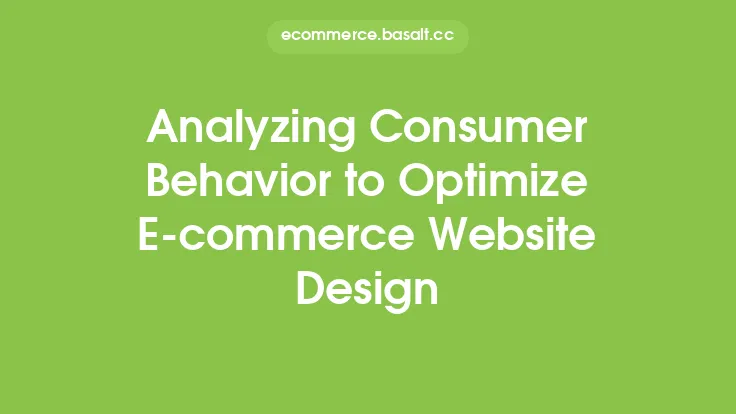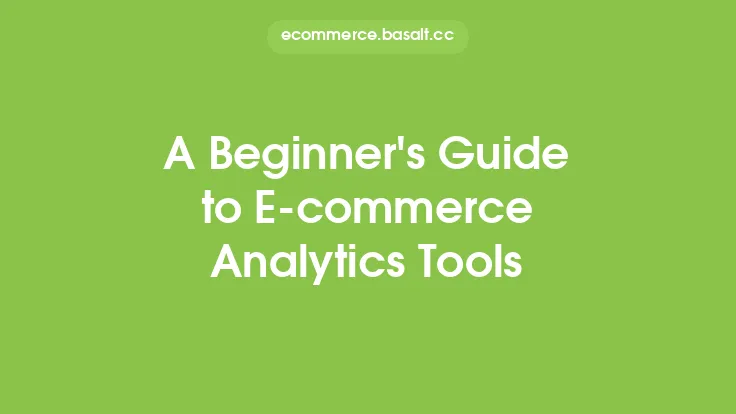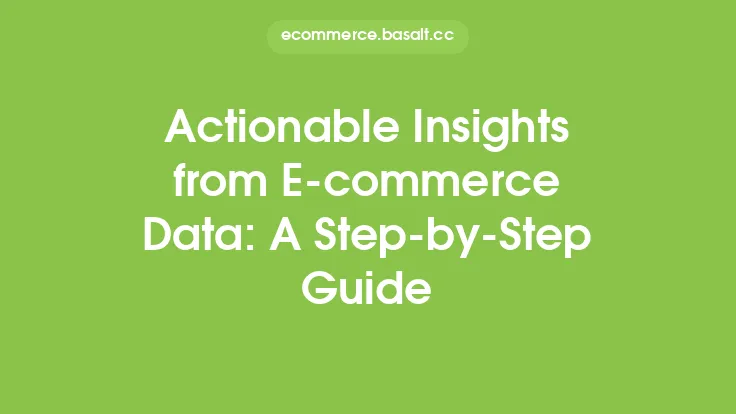When it comes to e-commerce, understanding consumer purchase decisions is crucial for businesses to succeed. Consumer behavior analysis is a vital aspect of e-commerce trends, as it helps companies to identify patterns, preferences, and motivations that drive consumers to make purchasing decisions. In this article, we will delve into the world of consumer behavior analysis, exploring the factors that influence consumer purchase decisions and providing insights on how businesses can use this information to improve their e-commerce strategies.
Introduction to Consumer Behavior Analysis
Consumer behavior analysis is the study of how consumers make purchasing decisions, including the factors that influence their choices, the processes they use to evaluate products, and the motivations that drive their behavior. This field of study is essential for e-commerce businesses, as it helps them to understand their target audience, identify market trends, and develop effective marketing strategies. By analyzing consumer behavior, businesses can gain a deeper understanding of their customers' needs, preferences, and pain points, allowing them to create personalized experiences that drive engagement, conversion, and loyalty.
Factors Influencing Consumer Purchase Decisions
Several factors influence consumer purchase decisions, including demographic characteristics, such as age, gender, income, and education level. Additionally, psychological factors, like personality, attitudes, and motivations, play a significant role in shaping consumer behavior. Social factors, including social media, family, and friends, also have a profound impact on consumer purchase decisions. Furthermore, cultural factors, such as cultural background, values, and norms, influence consumer behavior and purchasing decisions. By understanding these factors, businesses can develop targeted marketing strategies that resonate with their target audience and drive sales.
The Consumer Decision-Making Process
The consumer decision-making process is a complex and multi-stage process that involves several steps, including problem recognition, information search, evaluation of alternatives, purchase decision, and post-purchase evaluation. During the problem recognition stage, consumers become aware of a need or want, which triggers the decision-making process. The information search stage involves gathering information about potential solutions, while the evaluation of alternatives stage involves assessing the pros and cons of each option. The purchase decision stage is where the consumer makes a final decision, and the post-purchase evaluation stage involves assessing the satisfaction with the purchase. By understanding this process, businesses can develop strategies to influence consumer behavior at each stage, increasing the likelihood of conversion and customer loyalty.
The Role of Emotions in Consumer Purchase Decisions
Emotions play a significant role in consumer purchase decisions, as they often drive impulse purchases, brand loyalty, and customer satisfaction. Consumers are more likely to make purchasing decisions based on emotions rather than rational thinking, which is why businesses should focus on creating emotional connections with their customers. By using storytelling, imagery, and personalized experiences, businesses can create an emotional bond with their customers, increasing the likelihood of conversion and loyalty. Additionally, businesses should prioritize customer satisfaction, as positive emotions can lead to positive word-of-mouth, online reviews, and repeat business.
The Impact of Technology on Consumer Purchase Decisions
Technology has revolutionized the way consumers make purchasing decisions, with the rise of e-commerce, mobile commerce, and social media. Consumers can now access information, compare prices, and make purchases from anywhere, at any time. Businesses must adapt to these changes by developing omnichannel strategies that provide seamless experiences across online and offline channels. Additionally, businesses should leverage technology to personalize experiences, offer convenient payment options, and provide real-time customer support. By embracing technology, businesses can stay ahead of the competition and meet the evolving needs of their customers.
Best Practices for Understanding Consumer Purchase Decisions
To understand consumer purchase decisions, businesses should prioritize customer feedback, conduct market research, and analyze consumer data. By gathering insights from customers, businesses can identify patterns, preferences, and pain points, allowing them to develop targeted marketing strategies. Additionally, businesses should stay up-to-date with the latest e-commerce trends, attend industry events, and participate in online forums to stay informed about consumer behavior and market trends. By following these best practices, businesses can gain a deeper understanding of their customers and develop effective strategies to drive sales, engagement, and loyalty.
Conclusion
Understanding consumer purchase decisions is crucial for e-commerce businesses to succeed. By analyzing consumer behavior, businesses can identify patterns, preferences, and motivations that drive consumers to make purchasing decisions. By understanding the factors that influence consumer purchase decisions, the consumer decision-making process, and the role of emotions and technology, businesses can develop targeted marketing strategies that drive sales, engagement, and loyalty. By prioritizing customer feedback, conducting market research, and analyzing consumer data, businesses can stay ahead of the competition and meet the evolving needs of their customers. Ultimately, understanding consumer purchase decisions is key to developing effective e-commerce strategies that drive business success.





